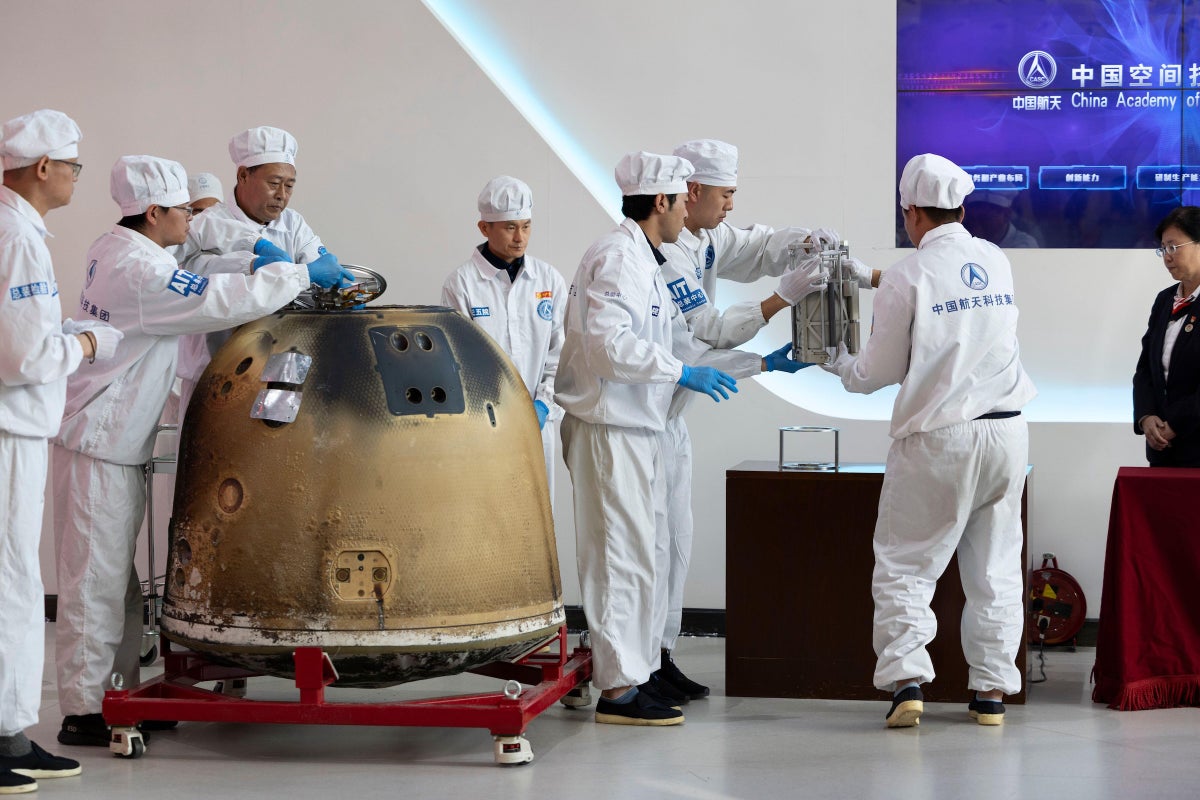In a groundbreaking discovery stemming from China’s Chang’e-6 lunar mission, scientists have uncovered rare fragments of meteorite debris on the far side of the Moon—an unexpected find that promises to shed new light on the early history and evolution of our Solar System. This discovery, detailed in a recent publication in the Proceedings of the National Academy of Sciences, highlights how the analysis of these ancient space rocks could help unravel the role of asteroids in delivering vital compounds, such as water, to planetary bodies including the Earth and the Moon.
The Chang’e-6 mission, launched by China, made history by being the first to successfully collect and return samples from the far side of the Moon. Unlike previous missions, which mostly explored the near side—the portion of the Moon that always faces Earth—the Chang’e-6 lander touched down in the South Pole–Aitken Basin. This vast and deep crater, which covers roughly a quarter of the lunar surface, is believed to have been formed by a massive asteroid impact approximately four billion years ago. Scientists have long been interested in this region because it exposes material from the Moon’s mantle, the layer beneath the crust, brought to the surface by ancient collisions. Investigating this area was intended to answer fundamental questions about why the far side of the Moon looks so different from the near side, which is marked by fewer craters and more volcanic activity.
However, what the researchers found in the returned samples went beyond their initial objectives. Upon studying the fragments, the team first believed they were examining lunar mantle rock, but detailed chemical analyses revealed a different story. Measurements of iron, manganese, and zinc concentrations in the debris did not align with known lunar materials. To identify the origin of these fragments, scientists turned to the study of oxygen isotopes—variations in oxygen atoms that serve as distinctive "fingerprints" of different celestial bodies. According to Mang Lin, a geochemist at the Guangzhou Institute of Geochemistry (GIG) and one of the paper’s authors, this method is akin to “space forensics,” allowing researchers to trace the provenance of extraterrestrial materials.
The oxygen isotope ratios in the debris closely matched those found in samples collected from two well-studied near-Earth asteroids: Ryugu and Bennu. NASA’s OSIRIS-REx mission successfully returned material from Bennu in 2020, while the Japanese space agency Hayabusa2 brought back samples from Ryugu in 2019. Both of these asteroids are of great scientific interest because they contain dust grains that predate the Solar System itself, along with volatile compounds, including water. The similarity suggests that the meteorite debris found on the Moon’s far side originated from a type of asteroid akin to Ryugu and Bennu.
This finding has profound implications for our understanding of how water and other volatile compounds arrived on the Moon and Earth. Volatiles are essential for creating habitable environments, and scientists have long debated the sources of these materials on rocky planets. The discovery that this rare type of asteroid contributed such compounds to the Moon strengthens the idea that asteroid impacts played a critical role in seeding planetary bodies with the ingredients necessary for life and geological processes.
One of the challenges in studying such meteorite material on Earth is that these fragile rocks rarely survive their fiery passage through our atmosphere. Jintuan Wang, a co-author of the study and geosciences researcher at GIG, emphasized that these materials tend to break apart before reaching the surface, making intact samples extremely rare. The Chang’e-6 mission’s ability to return pristine fragments directly from the Moon circumvents this problem, providing scientists with invaluable material to study.
The discovery was so unexpected that it was not even among the original scientific objectives of the Chang’e-6 mission. Yuqi Qian, an Earth and planetary scientist at the University of Hong Kong who was not involved in the study, expressed excitement about the finding, calling it “such an unexpected and important finding.” The research team now hopes that further analysis of the Chang’e-6 samples will allow them to determine the age of these meteorite fragments. This could clarify whether the parent asteroid responsible for these fragments was also the impactor that created the South Pole–Aitken Basin itself.
Beyond its scientific significance, the Chang’e-6 mission exemplifies the growing capabilities and ambitions of lunar exploration programs. By venturing to the Moon’s far side, an area largely unexplored and inaccessible to Earth-based observations, China

